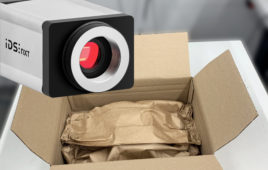The Dynamic Spectrum Alliance (DSA), among whose members are Google, Microsoft, and Facebook, has filed with the FCC advocating that the Commission move ahead with a plan to open more unlicensed spectrum in the U.S. – spectrum that could end up being used for new wireless services.
The DSA asked the Federal Communications Commission to open access to unused radio frequencies in the 600 MHz, 3.5 GHz, and 5 GHz bands.
TV broadcasters operate in the 600 MHz band, but to keep TV stations from interfering with each other, there are unused frequencies in every market – so-called white spaces. Companies like Microsoft have been enthusiastic about using white-space spectrum for broadband wireless.
The FCC is preparing an auction, asking TV broadcasters to voluntarily relinquish their licenses in the 600 MHz spectrum; those licenses would then be auctioned off. This auction was originally scheduled to occur this year; the FCC in December chose to push that auction back to 2015, citing the need to study the plan further.
The FCC is simultaneously considering opening up part of the 3.5 GHz band, much of which is being used by Wi-Fi equipment. The most popular plan for this swath of spectrum is to use it for small-cell communications, most likely supplementing existing cellular networks.
The 5 MHz band is similarly used for Wi-Fi, but there are segments of the band that could be opened, expanding the spectrum available for Wi-Fi equipment by as much as 35 percent.
DSA joins the argument that opening all this spectrum would lead to more wireless bandwidth and reduced costs for consumers.
Paul Garnett, Dynamic Spectrum Alliance chairman of the board and director of technology policy at Microsoft, said, “We hope that the FCC will move quickly over the next few months, adopt and implement new regulations allowing for dynamic access to spectrum in the 600 MHz, 3.5 GHz, and 5 GHz bands.”
The Alliance’s filing details its suggestions to support the FCC’s leadership on spectrum policy and its work in facilitating more efficient spectrum use. The recommendations outlined in the filing are:
- The Commission should enable robust access to licensed and unlicensed spectrum above and below 1 GHz. Licensed and unlicensed uses provide distinct opportunities and benefits that complement each other. Therefore, a spectrum policy that balances these approaches will maximize innovation and investment.
- Sufficient usable unlicensed spectrum must remain available in 600 MHz bands. When allocating the spectrum made available as a result of the digital television transition and repacking the 600 MHz broadcast bands, the Commission should strike the right balance between exclusive-use licensed access and non-exclusive, open, unlicensed access.
- The Commission must ensure meaningful unlicensed access to the 3.5 GHz spectrum. To ensure the most effective deployment of new opportunistic technologies in the 3.5 GHz band, the Commission should reserve sufficient nationwide spectrum for robust, unlicensed General Authorized Access.
- The Commission should expand unlicensed access in the 5 GHz bands. The Commission should consider sharing techniques, including geolocation database technologies, whether standalone or integrated with sensing, beacons, and other technology, as an option for unlicensed devices in the 5 GHz bands, to accommodate more users, allow more efficient use of the band, and facilitate enforcement of sharing rules.
- The Commission should immediately endorse the ‘use it or share it’ principles for licensed spectrum. This allows a database to continue to protect incumbent licensees in these new bands while at the same time enabling vast amounts of underutilized spectrum for unlicensed access.
The Dynamic Spectrum Alliance is a global organization advocating for laws and regulations that will lead to more efficient and effective spectrum utilization. The DSA’s membership spans multinationals, small- and medium-sized enterprises, and academic, research, and other organizations from around the world, all working to create innovative solutions that will increase the amount of available spectrum to the benefit of consumers and businesses alike.
Filed Under: Industry regulations




